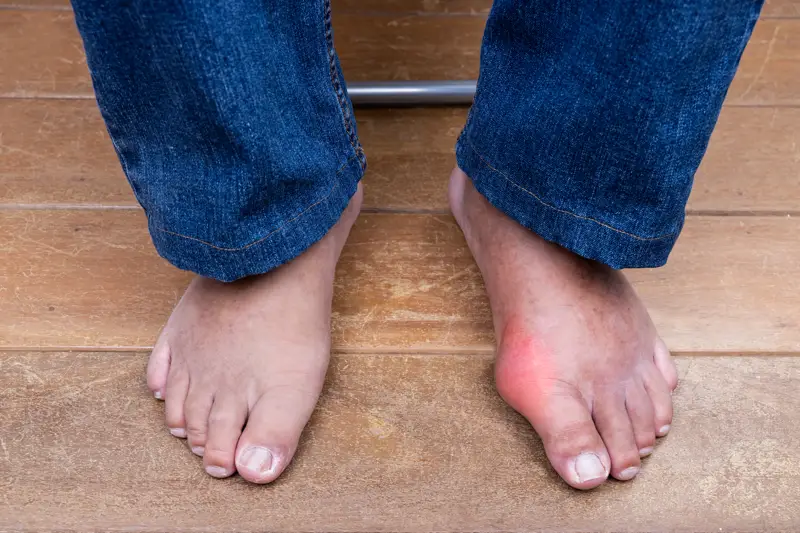Gout
Learn More
What Is Gout?
Gout is a type of arthritis caused by the buildup of uric acid crystals in the joints. It typically affects the big toe but can also impact other joints like the ankles, knees, and elbows. Uric acid is a waste product produced when the body breaks down purines, substances found in certain foods and drinks. When the body produces too much uric acid or cannot eliminate it properly, crystals form in the joints, leading to inflammation, pain, and swelling. Gout attacks often occur suddenly and can be extremely painful. Treatment focuses on reducing inflammation, managing pain, and lowering uric acid levels in the body to prevent future attacks.
Symptoms
What Are the Symptoms of Gout?
Intense Pain
Tenderness
Fever
Swelling and Redness
Limited Movement
Tophi
Gout FAQ
Gout is caused by the buildup of uric acid crystals in the joints, which can occur due to high levels of uric acid in the blood. This can be caused by factors like diet, genetics, dehydration, and certain medical conditions.
Gout is diagnosed through physical exams, blood tests to measure uric acid levels, and sometimes joint fluid tests to confirm the presence of uric acid crystals.
Treatment includes medications to reduce pain and inflammation during attacks, as well as long-term medications to lower uric acid levels in the body. Lifestyle changes, such as dietary adjustments, are also recommended.
Gout attacks can be prevented by managing uric acid levels through medications, avoiding foods high in purines (such as red meat, shellfish, and alcohol), and staying hydrated.
A gout attack can last from a few days to several weeks. With treatment, symptoms typically improve within a few days.
While gout can cause intense pain and joint damage if left untreated, it can be effectively managed with medication and lifestyle changes.






















